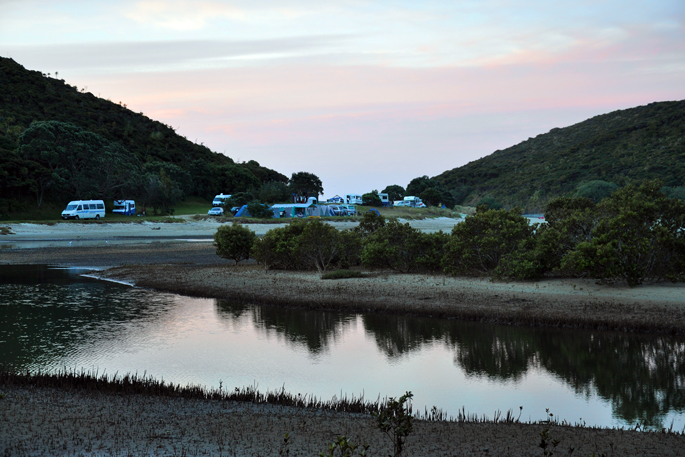A few summers ago, my best friend and I decided to take our seven sons (four of mine and three of hers), all aged between 12 and 15, on a camping trip to the Far North, writes Coast & Country journalist Catherine Fry.
We were seasoned campers but hadn’t gone off-grid before.
Every last detail was planned for using Tapotupotu DOC camp as a central location for three nights with no power, no fridge, no drinkable water, long drops and cold showers.
We broke the back of the journey from the Waikato in one day and stayed in cabins at Ahipara Holiday Park.
Ninety-mile beach at sunset was ideal for seven boys to let off steam after the seven hour drive and it gave us mums the chance to refreeze the ice bricks to keep our meat meals for the next two days frozen.
Tapotupotu campground is beautiful with an estuary, sandy beach, rock pools and cliffs.
We took in 45 litres of bottled water, and two frozen meals, tinned mince, potatoes, rice and pasta. Breakfast was cereal with made up powdered milk and we ate bread and tinned meats for lunch. Snacks included chips, fruit and bars.
Living with nature
Every day was around 30 degrees, but the nights got quite cold. It didn’t rain once, which made living in three tents and cooking and eating outside quite idyllic. We soon learned to ensure all the fly nets were closed early and there were very exaggerated discussions about mosquitoes “the size of sparrows”.
The showers were bracing, a steady buzz of flies could be heard from the long drops, and there was no mobile coverage, just board games, exploring and preparing food.
Breakfast on the first day ended up in the bin as apparently the reconstituted powdered milk was “disgusting”. That night, we put a water bottle under the car to get cold and before the kids were up we made up more powdered milk and announced we’d bought milk……… no-one complained!
We walked the part of the Te Rerenga Wairua track that goes from Tapotupotu to Cape Reinga lighthouse. Described as an easy walk of about five kilometres return, it felt longer and wasn’t particularly easy, but the views looking forward and behind were worth it.
The kids did well and had a picnic lunch by Cape Reinga lighthouse. I struggled in the heat and managed to score us all a ride on a half empty tour bus back along the road to Tapotupotu, much to the amazement of the foreign tourists.
Stunning beaches
Rarawa Beach has pure white, talc-like sand that squeaks when you walk on it and the sea looks sapphire blue. Kapowairua Beach (Spirits Bay) has pinkish sand from a distance and closer inspection reveals it’s made up of pink crushed shells. Both beaches have a DOC campground with toilets and cold showers but no drinking water.
The boys thoroughly enjoyed sand surfing down the giant Te Paki yellow sand dunes using boogie boards which can be hired at the kiosk. It is a huge work out climbing up, but they all did it several times and the adrenalin rush going down fast made up for it.
We took a whole day to go via the west coast to our last two nights’ accommodation in cabins at Goat Island Camping near Leigh, which is on the east coast north of Auckland.
Our route allowed us to hug the scenic coast road around the Hokianga Harbour and use the Rawene vehicle ferry to cross the harbour. The drive on State Highway 12 south through the Waipoua Forest was punctuated by stopping to see the majestic kauri, Tane Mahuta, and a very worthwhile visit to The Kauri Museum at Matakohe.
The experience is still talked about by the seven boys as “the best holiday we ever took them on”, and yet it was also the most back to basics camping trip we have ever done.



1 comment
Awesome
Posted on 09-05-2024 07:37 | By Yadick
AWESOME, ABSOLUTELY AWESOME.
Making positive family memories.
Leave a Comment
You must be logged in to make a comment.